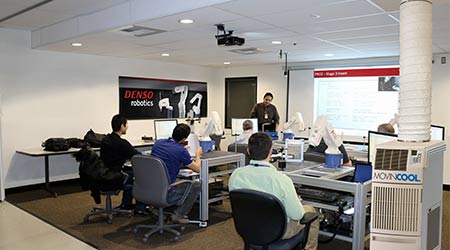 By bringing key information to the specification process, managers will be able to select equipment that meets the facility’s cooling needs.
By bringing key information to the specification process, managers will be able to select equipment that meets the facility’s cooling needs.Portable Cooling and Its Impact on Operations
Selecting the most effective unit for the application means managers need to understand cooling needs and equipment requirements
Portable cooling equipment is typically either temporary or semi-permanent, so their application should not require extensive maintenance, but managers should verify key requirements of their application, including power requirements, system venting and temperature monitoring systems.
Making sure proper power is readily available is essential. During the selection of portable cooling units, managers have various options at 115 volts (V), 208-230V and 460V, and they operate everywhere from 5-50 amps requiring an understanding of the existing power availability to ensure the proper power requirements are considered.
Most plug-in portable coolers available for 115V start at 12,000 Btu per hour with a maximum of 24,000 Btu per hour, so staging multiple units, although costly, might be the only option. The 208-230V and 460V options allow managers to supplement systems by up to 5 tons per cooling unit from various leading manufacturers, and they typically range in one-half-ton increments between the low and high ends.
Managers also need a gameplan for where the system heat will discharge, whether that is out an open window or into an existing plenum return. They also need to plan for any buildup of condensate. Some smaller units have an evaporative condensate cycle to remove minimal condensate, while most have either an integral condensate pump to an external drain or condensate pump to a supplied condensate container.
By bringing all of this information to discussions with manufacturers of portable cooling units, managers will be in a better position to specify equipment best suited to the situation and avoid the pitfalls that can undermine efficiency and performance.
Dan Forino, P.E., CCP, is regional director with Horizon Engineering Associates — www.horizon-engineering.com/ — in New York City. Forino has 11 years of experience in building commissioning and oversees the firm’s health care team, focusing on the regional health care institutions and overseeing their sustainability and indoor air quality consulting divisions.
Related Topics:














